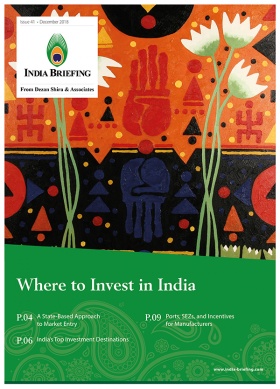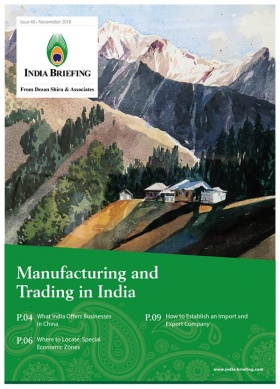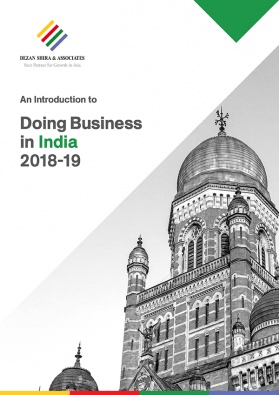The Waste Management Industry in India: Investment Opportunities
Editor’s Note: This is the first article in a three part series; the second can be found here and the third can be found here.
By 2025, India’s waste management sector is expected to be worth US$13.62 billion with an annual growth rate of 7.17 percent. Much of the waste India produces simply ends up in landfills without proper processing or treatment – redirecting this untapped waste to proper treatment and processing facilities will open up new investment possibilities.
In part one of this three part series, we look at India’s regulatory landscape for waste management and the types of waste India produces. In part two, we will highlight the innovations adopted by startups and small and medium enterprises (SMEs) in the country’s waste management sector and prospects for foreign investors and companies. Finally, in part three, we will explore waste management opportunities in the context of India’s ‘Smart Cities Mission’ – a huge urban planning initiative – necessitating critical sustainable waste management solutions.
Private sector participation welcome
The Environment Protection Act, 1986 grants the federal government authority in regulating all forms of waste; legislative rules are made by the Ministry of Environment, Forest, and Climate Change. New regulations are enacted and enforced on a state-by-state basis through individual State Pollution Control Boards (SPCBs).
It is individual urban local bodies (ULB), however, who are tasked with preparing and financing waste management plans. These plans must include door-to-door service and the establishment of centers for processing waste, recycling materials, and depositing hazardous waste.
The recent Solid Waste Management Rules, 2016 state that both residential and commercial waste generators have to pay a user fee for waste collection as well as a ‘spot fine’ if caught littering or not segregating waste. The amount of both is the decision of local bodies.
The Rules also encourage ULBs to partner with private companies in planning and implementing waste management solutions – a further step towards liberalizing India’s infrastructure sector.
Waste in India: A typology
India generates roughly 62 million tons of garbage a year. Out of this staggering figure, approximately 43 million tons are collected annually: 11.9 million tons of collected waste are treated and the remaining 31 million tons disposed off in landfills.
Waste processing in India is broadly categorized into liquid, solid, hazardous, and recyclable. Below is a more focused breakdown of certain kinds of waste that have been capitalized by the private sector.
- Solid Waste
Solid waste is an umbrella term for discarded or abandoned materials. Solid waste is regulated by the Solid Waste Management Rules, 2016. These new rules seek to promote ‘waste to energy’ plants and the use of compost against chemical fertilizers.
Municipal solid waste (MSW) can be converted into an alternative to fossil fuel through a process of drying MSW then crushing it and packing it into brick form.
The Mumbai-based company Hanjer Biotech Enterprises, for instance, is currently setting up a power plant in the Surat district of Gujarat, which will run entirely on refuse-derived fuel (RDF). The plant aims to produce 15 megawatts (MW) of power annually.
Furthermore, MSW can be converted into compost. In fact, approximately 55 percent of India’s waste is organic. Unfortunately, little of this is treated for compost but rather dumped in landfills.
According to a study undertaken by the Clean India Journal in 2012, India can potentially produce 4.3 million tons of compost per year from municipal solid waste alone. Further, India boasts of over 650,000 organic farmers whose produce cater to a growing, health conscious middle class. New federal incentives for using compost over chemical fertilizers will boost compost’s demand.
- E-waste
Electronic waste (or ‘e-waste’) refers to used electronic devices or household appliances that are set to be recycled, recovered, or disposed. India is a hub for both the manufacturing and consumption of electronics. According to a 2016 joint study by ASSOCHAM and Frost & Sullivan, India produces 18.5 million metric tons (MT) of electronic waste every year. Of this, over 70 percent comes from government, public, and private industries while 15 percent comes from households.
E-waste is regulated by the E-waste (Management and Handling) Rules, 2016, which cover how e-waste is to be disposed, imported, and recycled. The E-waste Rules apply to producers, consumers, and bulk costumers of electronics as well as e-waste collection and recycling centers.
E-waste is disproportionately collected and processed by the unorganized sector and only 2.5 percent is recycled. In the unorganized sector, e-waste like discarded computers or smartphones are taken apart to be scrapped for precious and other metals.
E-waste can be refurbished and resold down their value chains. The precious and other metals found most commonly in circuit boards can also be extracted through safe and environmentally friendly methods. Bringing informal e-waste workers into the formal sector will profit from their existing knowledge and networks.
- Plastic
No official data exists on the amount of plastic waste generated in India. A 2015 survey conducted by the Indian government’s Central Pollution Control Board (CPCB) estimated that 15,000 tons of plastic waste is produced daily in India’s top 60 cities – out of which 6,000 tons are not recycled.
Plastic waste is regulated by the Plastic Waste (Management and Handling) Rules, 2016. The Plastic Waste Rules focus chiefly on plastic bags and dictate that recycling of plastics must be in accordance with Indian Standards. The Plastic Waste Rules, 2016 authorize and mandate municipal authorities to establish waste management systems for plastics.
Plastic recycling plants are growing in India but it is a largely untapped sector of the waste market. Plastic bottles, for instance, can be converted into polyester yarn and then sold as packaging in industrial and consumer industries.
- Bio-medical waste
Bio-medical waste (BM) includes all refuse used in the healthcare industry such as syringes and biological materials. The total bio-medical waste generated in India is approximately 484 tons per day (TPD) from over 160,000 healthcare facilities (HCF). An estimated 447 tons of this biomedical waste is treated in India daily.
BM waste is regulated through the Bio-medical Waste (Management and Handling) Rules, 2016, which ensure that BM waste is properly treated by the healthcare provider itself or else processed at a common treatment facility. Producers of BM waste are required to send annual returns to the State Pollution Control Board by January 31, detailing the categories and quantities of BM waste handled.
India’s healthcare sector is growing with plans to reach 2.9 million hospital beds by 2025. A recent study on waste management by the market research company Novonous estimates that India’s bio-medical waste management market will grow at a compounded annual growth rate of 8.41 percent – higher than the projected growth rate for waste in general.
Getting your hands dirty
With growth in manufacturing and domestic consumption, India’s total waste production is set to increase from its current annual rate of 62 million tons to a whopping 162 million tons by 2030.
As India’s production of waste increases, the country’s government has begun looking to the private sector for help. Municipal bodies mandated with establishing coherent and sustainable waste management systems have been encouraged by the federal government to partner with the private sector. Indeed, the waste management infrastructure that individual urban local bodies (ULBs) and townships are expected to have often does not exist. At the same time, states are allocating greater portions of their budget for the development of their infrastructure.
While working with ULBs can pose challenges due to lengthy decision-making time, these partnerships open up huge opportunities. Of the quantum of waste produced in India, so little gets treated. Getting your hands dirty promises to pay off.
About Us
India Briefing is produced by Dezan Shira & Associates. The firm assists foreign investors throughout Asia and maintains offices in China, Hong Kong, Indonesia, Singapore, Vietnam, and Russia.
Please contact india@dezshira.com or visit our website at www.dezshira.com.
- Previous Article GST Impact on Business in India: New Indirect Tax Administration, Benefit of Common Market
- Next Article SMEs and Startups in India’s Waste Sector









